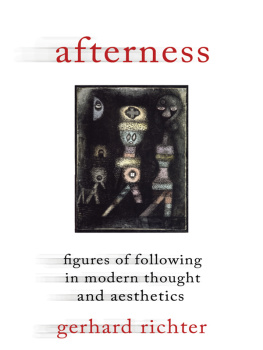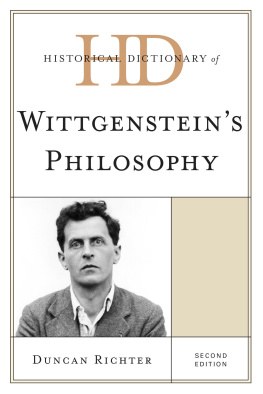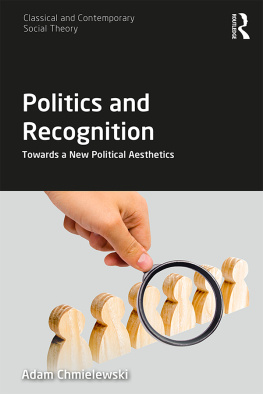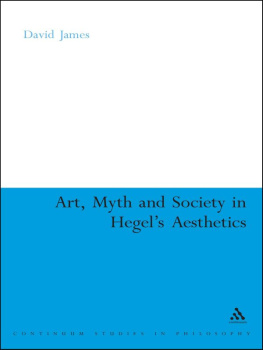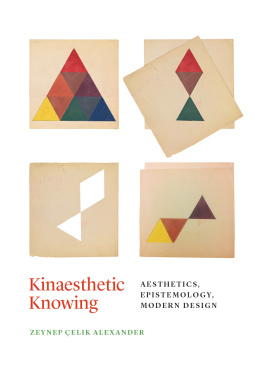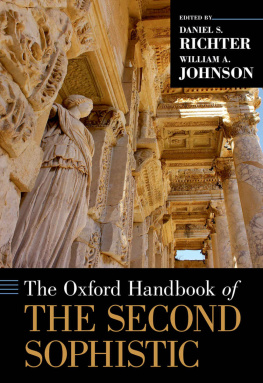Richter - Afterness: figures of following in modern thought and aesthetics
Here you can read online Richter - Afterness: figures of following in modern thought and aesthetics full text of the book (entire story) in english for free. Download pdf and epub, get meaning, cover and reviews about this ebook. City: New York, year: 2011, publisher: Columbia University Press, genre: Religion. Description of the work, (preface) as well as reviews are available. Best literature library LitArk.com created for fans of good reading and offers a wide selection of genres:
Romance novel
Science fiction
Adventure
Detective
Science
History
Home and family
Prose
Art
Politics
Computer
Non-fiction
Religion
Business
Children
Humor
Choose a favorite category and find really read worthwhile books. Enjoy immersion in the world of imagination, feel the emotions of the characters or learn something new for yourself, make an fascinating discovery.
Afterness: figures of following in modern thought and aesthetics: summary, description and annotation
We offer to read an annotation, description, summary or preface (depends on what the author of the book "Afterness: figures of following in modern thought and aesthetics" wrote himself). If you haven't found the necessary information about the book — write in the comments, we will try to find it.
Richter: author's other books
Who wrote Afterness: figures of following in modern thought and aesthetics? Find out the surname, the name of the author of the book and a list of all author's works by series.
Afterness: figures of following in modern thought and aesthetics — read online for free the complete book (whole text) full work
Below is the text of the book, divided by pages. System saving the place of the last page read, allows you to conveniently read the book "Afterness: figures of following in modern thought and aesthetics" online for free, without having to search again every time where you left off. Put a bookmark, and you can go to the page where you finished reading at any time.
Font size:
Interval:
Bookmark:
AFTERNESS
Columbia Themes in Philosophy, Social Criticism, and the Arts
Afterness
FIGURES OF FOLLOWING IN MODERN THOUGHT AND AESTHETICS
GERHARD RICHTER
COLUMBIA UNIVERSITY PRESS NEW YORK

COLUMBIA UNIVERSITY PRESS
Publishers Since 1893
NEW YORK CHICHESTER, WEST SUSSEX
cup.columbia.edu
Copyright 2011 Columbia University Press
All rights reserved
E-ISBN 978-0-231-53034-7
Library of Congress Cataloging-in-Publication Data
Richter, Gerhard, 1967
Afterness : figures of following in modern thought and aesthetics / Gerhard Richter.
p. cm.(Columbia themes in philosophy, social criticism, and the arts)
Includes bibliographical references and index.
ISBN 978-0-231-15770-4 (cloth : alk. paper)
ISBN 978-0-231-53034-7 (e-book)
1. Philosophy, Modern21st century. 2. TimePhilosophy. 3. Aesthetics. I. Title.
B805.R53 2011
190.9'051dc22
2011012670
A Columbia University Press E-book.
CUP would be pleased to hear about your reading experience with this e-book at .
References to Internet Web sites (URLs) were accurate at the time of writing. Neither the author nor Columbia University Press is responsible for URLs that may have expired or changed since the manuscript was prepared.
After philosophy comes philosophy. But it is altered by the after.
Jean-Franois Lyotard
Even the death of Christ was only his beginning.
Ernst Bloch
Only the How is repeatable. The pastexperienced as actual historicityis anything but the Over [das Vorbei].
Martin Heidegger
Modernity exists in the form of a desire to wipe out whatever came earlier, in the hope of reaching at last a point that could be called a true present, a point of origin that marks a new departure.
Paul de Man
Contents
As a recent doctoral student discussed with me how best to structure his dissertation, the contours of which were only beginning to take shape, he suggested writing an introduction followed by the individual chapters. Almost without hesitation, I replied by articulating a largely unspoken writerly strategy. To the great bafflement of my studentwho up to that point had never written a book-length textI advised against his plan, explaining that introductions almost always are written after the fact, in other words, last. What experienced writers knowthat introductions come first but almost always are composed as an afterthought to what already has been writtenbespeaks an irreducible belatedness in language and thought. That which introduces, points forward to, explains, and situates something that is not yet present always already will have been preceded by what it itself claims to precede. Hovering between proceeding and preceding, introductions are retroactively invented by what they tacitly claim to call into presence, an after in the guise of another temporality, another allegiance, another direction. It is no different with the present introduction, whose pages will have been written after the chapters that follow it had long since been completed.
Why start the book with this basic reflection on the relationship between the before and the after, between preceding and following? By commenting on the situatedness of the introduction in the wake of an after that actually is a before, and a before that is actually an after, we have already entered the terrain that this study wishes to delimit, interrogate, engage in, and contextualize in ever-shifting modulations, media, frames of reference, and conceptual registers.
After all, this book is concerned with a particular figure of modernity, that of following, coming after, having survived, outlived, or succeeded something or someone: what in broad terms I wish to call afterness. But what does it really mean for something to follow something else, either in language or as a concept? Can the after ever fully emancipate itself from its predecessor, or does it in fact remain in the latters ghostly and largely unacknowledged debt? The after is not merely a temporal dimension. A sustained reading of afterness has far-reaching implications for how we view the thought, aesthetic production, and ethico-political concerns of modernityfrom the afterness of Kants Copernican revolution in speculative thought (yielding, in his view, a genuinely critical philosophy after the phases of its dogmatic allegiances) to a postlapsarian Western culture famously said to come after Auschwitz. But our understanding of the after itself first must be understood. Interrogating this understanding without explaining away its irreducible difficulties and its resistances to understanding by pretending to know what the after is in advance of this or that particular manifestation is the task of this study.
Not a history of afterness in which one after is assumed simply to follow a previous after in a teleo-chronological succession of afters, this study instead is concerned with certain structural and conceptual features of afterness that traverse the spectral reverberations of any act of following. A useful way of conceptualizing the problem to which my investigation of afterness attempts to respond is to recall Walter Benjamins preoccupation with the concept of Nachleben (living on, living after, surviving, afterlife, or following) in modernity. Drawing on art historian Aby Warburgs coinage of the term Nachleben in the field of iconography and in the context of a revolutionary theory of the history of art and aesthetics, Benjamin was attracted to the idea that works, lives, languages, and media possess a historicity that cannot be reduced to the continuum of temporal unfolding preferred by the nineteenth-century German historicism associated with such proper names as Leopold von Ranke. As the French art historian Georges Didi-Huberman reminds us, in Warburgs work, the term Nachleben refers to the survival (the continuity or afterlife and metamorphosis) of images and motifsas opposed to their renascence after extinction or, conversely, their replacement by innovations in image and motif. He continues: Almost every section of Warburgs Kulturwissenschaftliche Bibliothek opens with a collection of documents related to artistic survivals, yielding a conception of Nachleben that must profoundly alter, if taken seriously, our understanding of what a historical phenomenon or fact is.
Although Warburgs introduction of concepts such as das Nachleben der Antike, or the afterlife of antiquity, as an art historical category would serve as a touchstone for art historians and theorists as heterogeneous as Ernst Gombrich, Erwin Panofsky, and Fritz Saxl, Benjamins later mobilization of Nachleben would effect an even more radical, enigmatic, and encompassing transformation of the philosophy of history and modernity. From Benjamins perspective, the concept of Nachleben inflects the fates of art, media, history, philosophy, and the ethico-political dimensions of modernity. He articulates these concerns in their most advanced formulations in the notes that comprise The Arcades Project. There, in the section on the theory of knowledge, Benjamin explains his conception:
Geschichtliches Verstehen ist grundstzlich als ein Nachleben des Verstandnen zu fassen und daher ist dasjenige was in der Analyse des Nachlebens der Werke, des Ruhmes erkannt wurde, als die Grundlage der Geschichte berhaupt zu betrachen.
[Historical understanding is to be grasped, fundamentally, as an afterlife of that which is understood; and what has been recognized in the analysis of the afterlife of works, in the analysis of fame, is therefore to be considered the foundation of history in general.]
Next pageFont size:
Interval:
Bookmark:
Similar books «Afterness: figures of following in modern thought and aesthetics»
Look at similar books to Afterness: figures of following in modern thought and aesthetics. We have selected literature similar in name and meaning in the hope of providing readers with more options to find new, interesting, not yet read works.
Discussion, reviews of the book Afterness: figures of following in modern thought and aesthetics and just readers' own opinions. Leave your comments, write what you think about the work, its meaning or the main characters. Specify what exactly you liked and what you didn't like, and why you think so.

